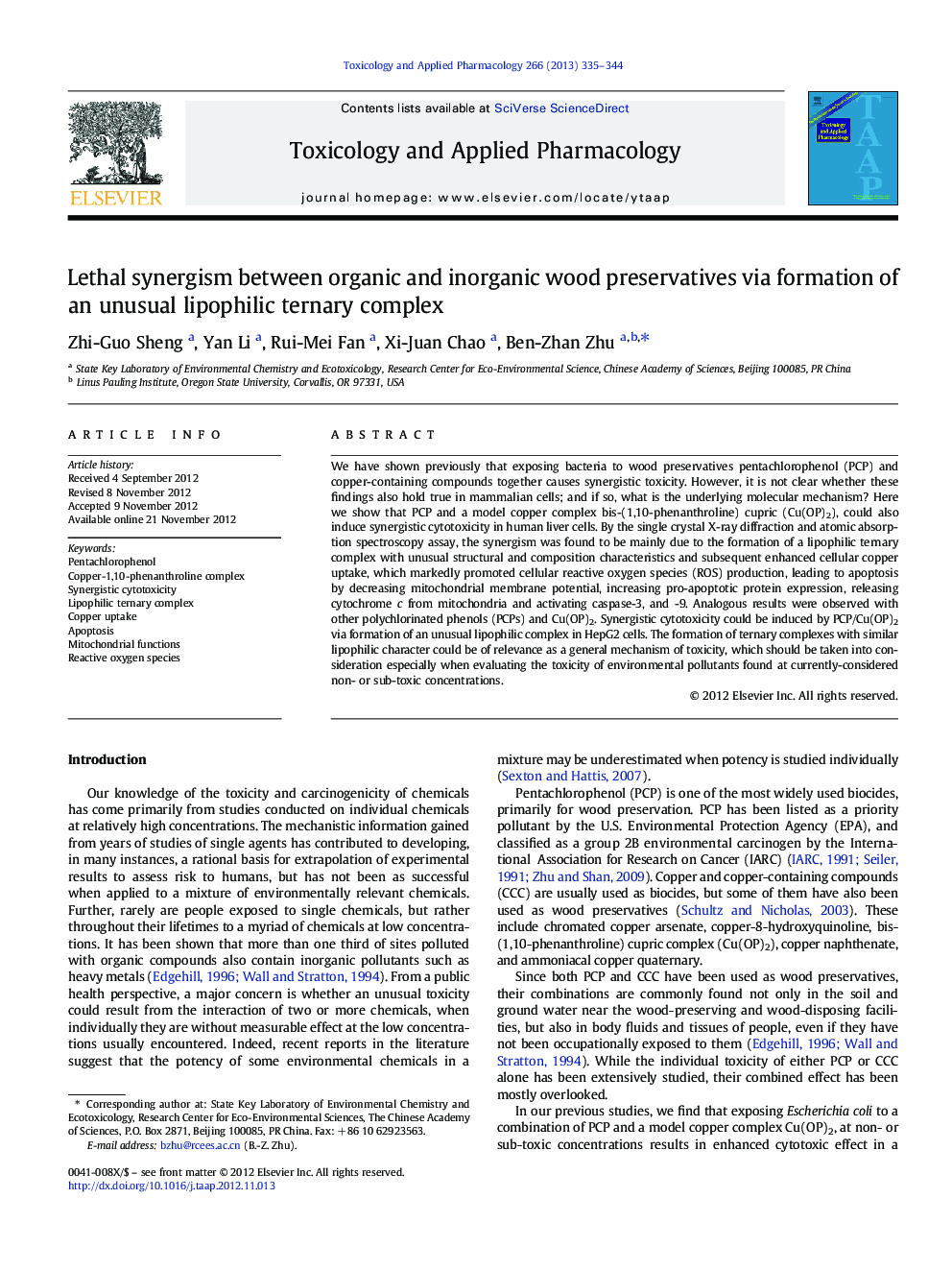| Article ID | Journal | Published Year | Pages | File Type |
|---|---|---|---|---|
| 2569318 | Toxicology and Applied Pharmacology | 2013 | 10 Pages |
We have shown previously that exposing bacteria to wood preservatives pentachlorophenol (PCP) and copper-containing compounds together causes synergistic toxicity. However, it is not clear whether these findings also hold true in mammalian cells; and if so, what is the underlying molecular mechanism? Here we show that PCP and a model copper complex bis-(1,10-phenanthroline) cupric (Cu(OP)2), could also induce synergistic cytotoxicity in human liver cells. By the single crystal X-ray diffraction and atomic absorption spectroscopy assay, the synergism was found to be mainly due to the formation of a lipophilic ternary complex with unusual structural and composition characteristics and subsequent enhanced cellular copper uptake, which markedly promoted cellular reactive oxygen species (ROS) production, leading to apoptosis by decreasing mitochondrial membrane potential, increasing pro-apoptotic protein expression, releasing cytochrome c from mitochondria and activating caspase-3, and -9. Analogous results were observed with other polychlorinated phenols (PCPs) and Cu(OP)2. Synergistic cytotoxicity could be induced by PCP/Cu(OP)2 via formation of an unusual lipophilic complex in HepG2 cells. The formation of ternary complexes with similar lipophilic character could be of relevance as a general mechanism of toxicity, which should be taken into consideration especially when evaluating the toxicity of environmental pollutants found at currently-considered non- or sub-toxic concentrations.
► The combination of PCP/Cu(OP)2 induces synergistic cytotoxicity in HepG2 cells. ► The synergism is mainly due to forming a lipophilic ternary complex between them. ► The formation of lipophilic ternary complex enhances cellular copper uptake. ► PCP/Cu(OP)2 stimulates the cellular ROS production. ► The ROS promoted by PCP/Cu(OP)2 induces mitochondria-dependent apoptosis.
